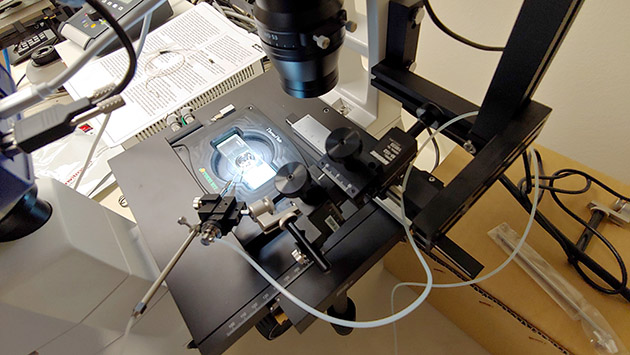Posted in:
Preparing for a New Facility at BIOS

Since arriving at BIOS in July 2019, scientist Julius Barsi’s first priority has been designing a facility dedicated to a unique type of molecular biology to be built at BIOS within an existing laboratory space. The transgenic facility, which will be located in the Naess Building on campus, will leverage marine organisms to discover specifically how genes are controlled.

Once operational, Barsi and colleagues will be able to perform genetic manipulation on a variety of marine organisms, such as sea urchins. The experiments will address fundamental questions in molecular biology, advancing scientists’ understanding about life science in general, Barsi said. Barsi joins other BIOS scientists who focus aspects of their research on molecular biology, including Leocadio Blanco-Bercial, Amy Maas, and Rachel Parsons.
Barsi employs marine animals as model organisms to decipher the mechanism that controls gene expression. The genetic code is common to all organisms, including those that are structurally different. “Therefore, we have reason to believe that the control system is also a shared feature,” he said. “That is why scientists study these organisms to answer fundamental biological questions relevant to human health, such as why mutations outside of genes often lead to cancer.”
When complete, the new facility will feature next-generation software and computing power, three state-of-the-art microscopes, and four video cameras. It will also have temperature-controlled specimen chambers and a three-dimensional micromanipulator that enables an injection needle to be precisely positioned within a cell. Finally, the facility will include a computer-controlled, application-specific device for manufacturing precision syringes in-house.
The facility will “open the gate into molecular research in Bermuda,” Barsi said. “From an institutional perspective, this represents a transition from occasionally using molecular biology as a tool, to acquiring the capability to investigate biological processes at the molecular level.”

Tagged: